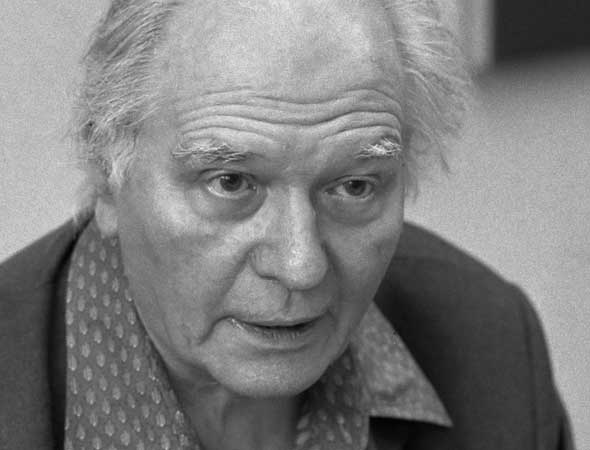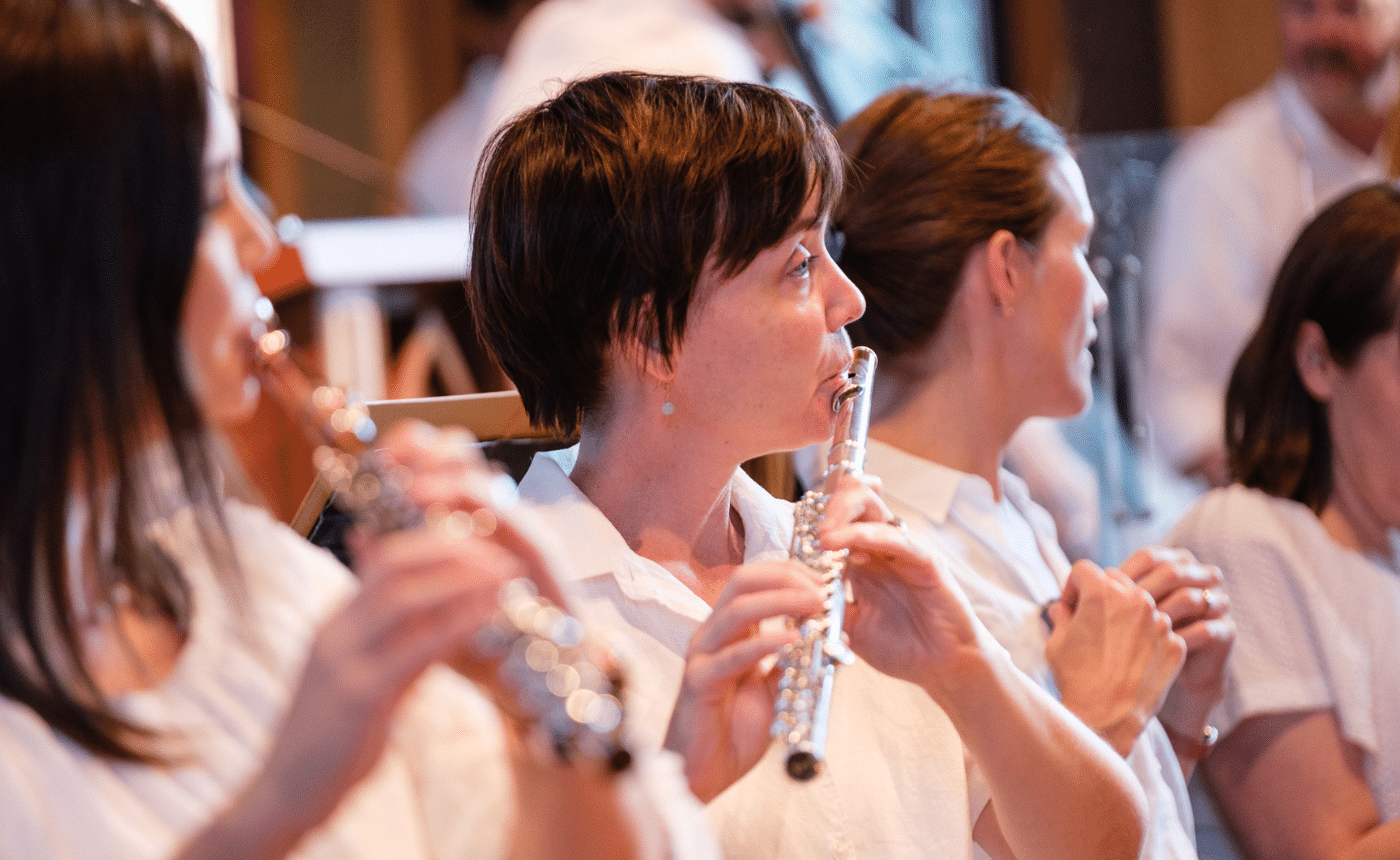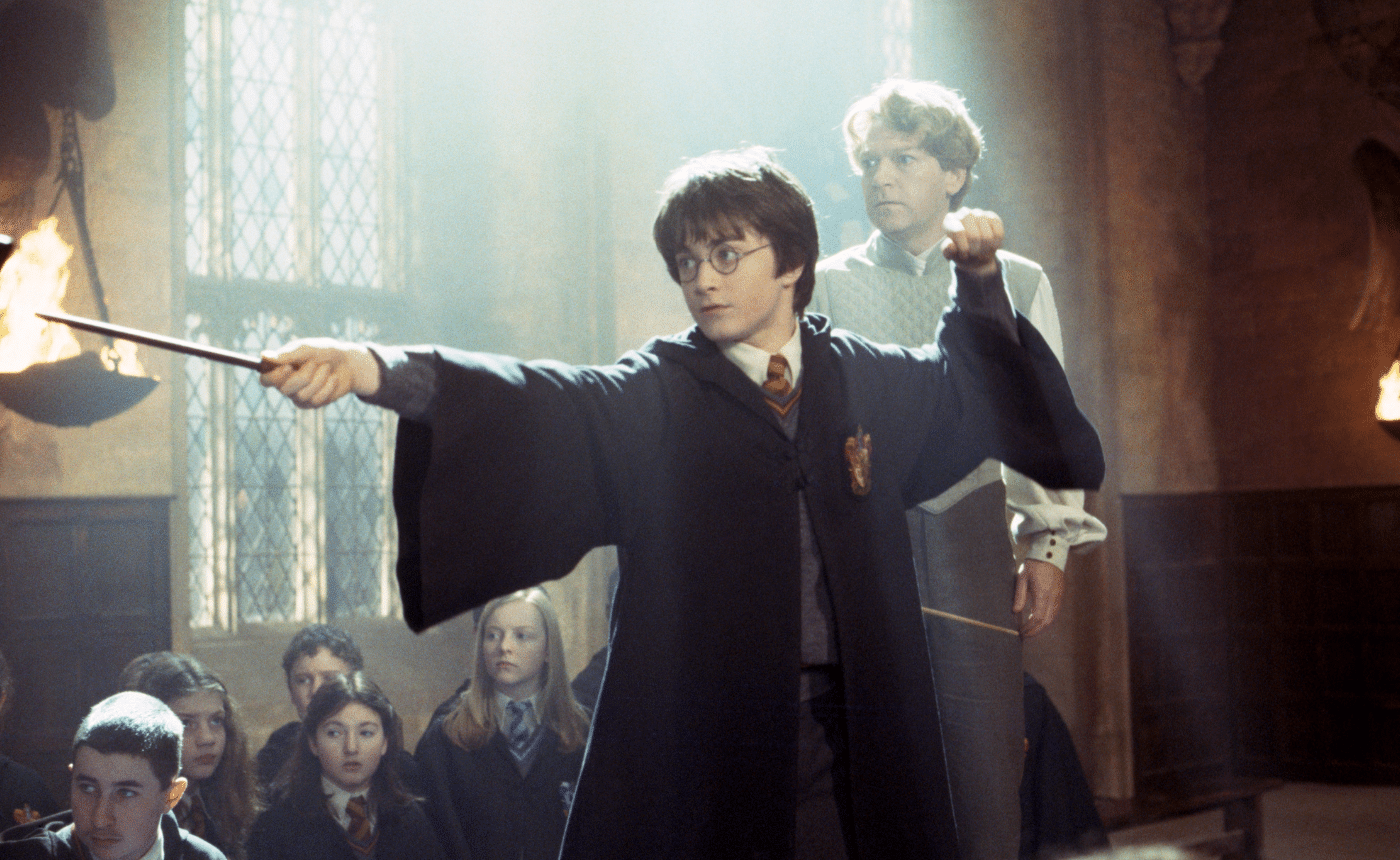MESSIAEN: “The white-browed robin-chat” from Des canyons aux étoiles
Instrumentation: Solo piano.

Olivier Messiaen
Celebrated both for his deep Christian spirituality and for giving voice to it through his remarkable music, Olivier Messiaen was born in 1908 and entered the Paris Conservatory at the age of 11. His wide-ranging musical influences span rhythmic patterns from classical Greek and Hindu sources and melodies based on modes of transposition he developed from his own early compositions; he also experimented with “total serialism,” an almost epistemological application of 12-tone “rows,” and with Eastern musical sources including Japanese and and Indonesian traditions.
If all this sounds mystical, perhaps it is. But Messiaen’s deepest musical influence — apart from his Roman Catholic faith — was almost certainly his devotion to nature and in particular his love of birds. He was an accomplished ornithologist, and as a composer took the time to transcribe bird songs as musical notation. He was devoted to the teachings of St. Francis of Assisi. To Messiaen’s admirers, his music and his life are inseparable; they seem to be the worldly evidence of a saintly life, and his music reveals a sincerity of expression that seems as simple as nature itself in the listening, regardless of the complexity of its sources.
Commissioned in 1971 by the American philanthropist and arts patron Alice Tully to celebrate the bicentenary of the Declaration of Independence, Dans canyons aux étoiles is a suite of twelve orchestral movements arranged in three groupings of five, two and five. When all twelve are performed together, the movements are operatic in scope, spanning more than an hour and a half.
Like Ferde Grofé’s Grand Canyon Suite, Messiaen’s Dans canyons aux étoiles is intimately connected to a particular place in the American Southwest — in this case, the state of Utah. Messiaen took inspiration from the landscape and the birds of the Beehive State while composing this suite, and was particularly moved by visiting Bryce Canyon National Park. In these movements, Messiaen’s musical reflections on Utahn grandeur — the meanings he discerned “written in stars,” the colors and forms he saw in the desert — describe his experiences of Bryce as a divine creation.
https://youtu.be/5DjgpPL7RhA?t=992
No matter how the suite is excerpted, it presents offbeat challenges. In sections that engage full orchestra, Messiaen’s instrumentation goes to unusual lengths to emulate nature — for example, in its unusually large percussion section, requiring five percussionists to take charge of a wind machine, a thunder sheet, various gongs, bells, maracas, whip, bass drum, triangle wood block, crotales, reco reco, tumba, and an instrument of Messiaen’s own invention, the geophone — a large drum filled with thousands of lead pellets.
At the other extreme, section IV, “Le Cossyphe d’Heuglin” (The white-browed robin-chat) is for solo pianist. But it requires an instrumentalist who can achieve a practically trance-like communion with Messiaen’s recreation of a bird in the wild. Messiaen created this movement, like much of his piano music, on his wife, the pianist Yvonne Loriod. The white-browed robin-chat, or Heuglin’s robin, is beguiling songbird found mainly in Africa whose “chat” is a melodious and highly variable song heard at dawn and dusk.












